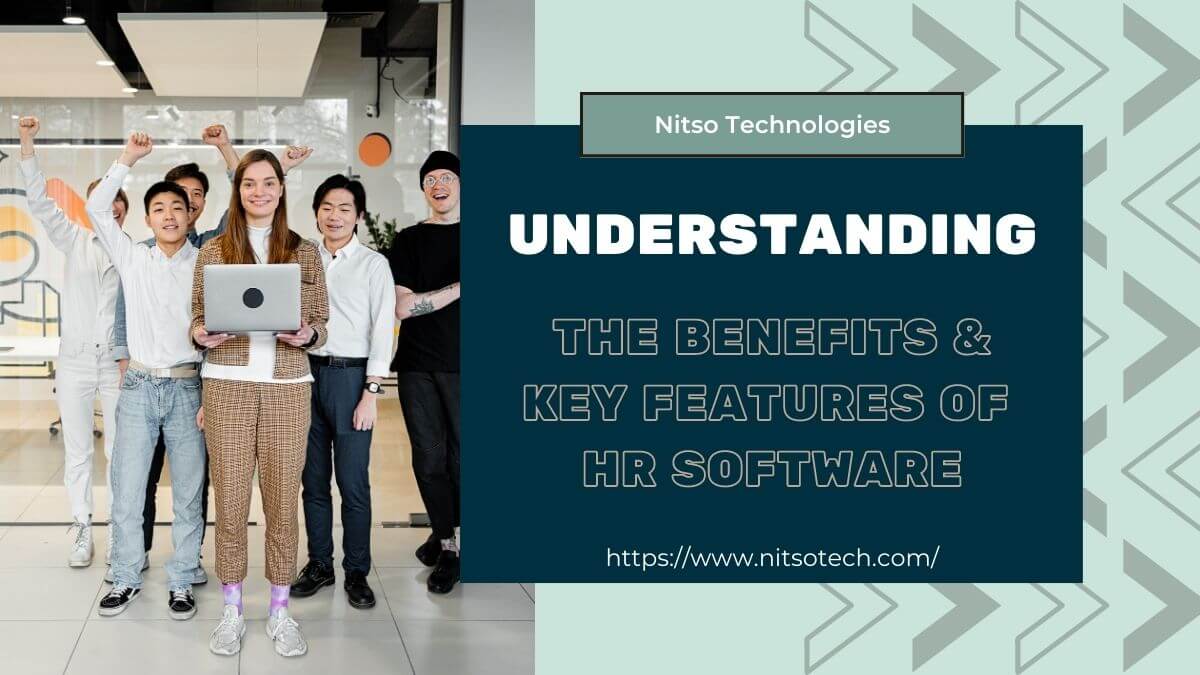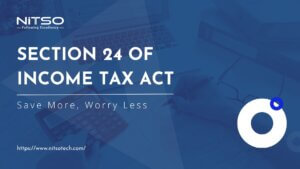HR software, also known as human resources software, is a type of computer program designed to automate and streamline the administrative tasks associated with managing an organization’s workforce. This software can handle a wide range of HR-related tasks, including recruitment, onboarding, payroll processing, benefits administration, performance management, and more.
Table of Contents
Importance of HR software for businesses
HR software is essential for businesses of all sizes and industries. With the increasing complexity of HR regulations and the growing demands of today’s workforce, it can be difficult for HR teams to keep up with their administrative tasks manually. HR software helps businesses to automate their HR processes and streamline their operations, making it easier for HR teams to focus on more strategic tasks such as employee engagement, talent management, and succession planning.
Moreover, HR software can provide businesses with valuable insights into their workforce. By leveraging analytics tools, HR teams can analyze key HR metrics such as employee turnover rates, time-to-hire, and employee satisfaction scores. This information can help businesses to identify areas for improvement and make data-driven decisions.
Top 10 Features of HR Software
HR software comes with a variety of features that help businesses manage their workforce more efficiently. Here are the top 10 features of HR software:
1. Applicant Tracking System
The Applicant Tracking System (ATS) is a feature that enables businesses to manage the recruitment process, from posting job openings to hiring new employees. The ATS allows businesses to create job listings, receive and store resumes, and track candidates through the hiring process. This feature helps businesses to streamline the recruitment process, save time, and hire the right talent.
2. Onboarding
The Onboarding feature helps businesses to efficiently onboard new employees and ensure they have all the resources and information they need to be productive. This feature includes tools to create onboarding checklists, manage new hire paperwork, and track employee progress during the onboarding process. With the Onboarding feature, businesses can ensure that new hires are quickly integrated into the company culture and can start contributing to the organization’s success.
3. Employee Information Management
The Employee Information Management feature allows businesses to securely store and manage employee data, including personal information, job history, and performance records. This feature helps businesses to maintain accurate employee records and simplifies the process of accessing and updating employee information.
4. Time and Attendance Management
The Time and Attendance Management feature automates the time tracking and attendance tracking, making it easier for businesses to manage employee schedules and calculate payroll. This feature helps businesses to reduce errors in time tracking and ensures that employees are accurately paid for their work.
5. Performance Management
The Performance Management feature provides tools to help businesses set goals, track progress, and evaluate employee performance. This feature includes performance reviews, goal-setting tools, and feedback mechanisms. With the Performance Management feature, businesses can identify high-performing employees and provide support to employees who may be struggling.
6. Learning and Development
The Learning and Development feature allows businesses to manage employee training and development programs, ensuring that employees have the skills and knowledge they need to succeed. This feature includes tools to create training materials, track employee progress, and evaluate the effectiveness of training programs. With the Learning and Development feature, businesses can ensure that employees are equipped to meet the organization’s needs.
7. Payroll Management
The Payroll Management feature automates payroll processing, ensuring accurate and timely payment of employees. This feature includes tools to calculate employee wages, withhold taxes, and generate pay stubs. With the Payroll Management feature, businesses can save time and reduce errors in payroll processing.
8. Reporting and Analytics
The Reporting and Analytics feature provides businesses with valuable insights into key HR metrics, allowing them to make data-driven decisions. This feature includes tools to generate reports on employee performance, turnover rates, and other HR-related metrics. With the Reporting and Analytics feature, businesses can identify trends, track progress, and make informed decisions about HR policies and practices.
9. Compliance Management
The Compliance Management feature helps businesses to comply with HR regulations and avoid costly fines and penalties. This feature includes tools to ensure compliance with labor laws, benefits regulations, and other HR-related regulations. With the Compliance Management feature, businesses can avoid legal issues and ensure that their HR practices are in line with industry standards.
10. Mobile Access
The Mobile Access feature enables employees and managers to access HR information and perform HR-related tasks from anywhere, at any time. This feature includes mobile apps and web-based interfaces that allow employees to check their schedules, request time off, and view their pay stubs. With the Mobile Access feature, businesses can increase employee productivity and engagement by providing easy access to HR-related information and tools.

Top 10 Benefits of HR Software
Human Resource (HR) software has become an essential tool for modern businesses to manage their workforce effectively. With the ability to automate and streamline HR processes, it offers several benefits to organizations. In this section, we will explore the top 10 benefits of HR software that can help businesses improve their HR operations and achieve their strategic goals.
1. Streamlined HR Processes
One of the biggest benefits of using HR software is that it can streamline various HR processes. Instead of relying on manual processes or multiple spreadsheets, HR software can automate tasks such as applicant tracking, onboarding, time and attendance management, performance management, payroll, and more. With a centralized system in place, HR managers can easily access and manage employee data, track progress, and quickly respond to requests or inquiries. This results in a more efficient and effective HR department, allowing HR professionals to focus on more strategic initiatives.
2. Improved Hiring Process
Another important benefit of using HR software is that it can significantly improve the hiring process. An applicant tracking system can help HR managers post job openings, track applicants, and schedule interviews, all from a single platform. This ensures that no applications fall through the cracks and that the hiring process is completed in a timely and organized manner.
3. Better Employee Engagement and Retention
HR software can also help organizations improve employee engagement and retention. With features such as performance management, learning and development, and employee information management, HR professionals can better understand their employees’ strengths and areas for improvement. By addressing these areas, employees are more likely to feel valued and invested in the organization, which can lead to higher retention rates. Know more about Employee Retention and Attracting in a Competitive Job Market.
4. Increased Productivity
HR software can also help increase productivity by automating time-consuming tasks and reducing manual data entry. With a streamlined system in place, HR professionals can focus on more strategic initiatives, such as employee engagement, talent management, and compliance management. This results in a more productive HR department and a more efficient organization overall.
5. Reduced Compliance Risks
Compliance management is a critical aspect of HR management, and HR software can help organizations reduce compliance risks. With features such as compliance tracking and reporting, organizations can ensure that they are complying with federal, state, and local regulations. This can help mitigate the risk of costly penalties and lawsuits.
6. Enhanced Data Security
HR software can also enhance data security by ensuring that sensitive employee information is kept secure and confidential. With a centralized system in place, HR professionals can control access to employee data, ensuring that only authorized personnel can view or edit sensitive information.
7. Better Communication
HR software can help improve communication between HR professionals, employees, and other stakeholders. With features such as messaging and notifications, organizations can ensure that everyone is on the same page and that important information is communicated in a timely and effective manner.
8. Cost Savings
Investing in HR software can result in significant cost savings for businesses. By automating time-consuming HR processes such as payroll and compliance management, companies can reduce the need for manual labor and the associated costs. Additionally, HR software can help reduce the risk of compliance violations, which can result in costly fines and legal fees.
9. Improved Decision Making
HR software provides access to valuable data and analytics that can help businesses make informed decisions about their workforce. By analyzing data on employee performance, turnover rates, and other key metrics, businesses can identify areas for improvement and make data-driven decisions.
10. Scalability
HR software is designed to grow and scale with businesses, making it a valuable investment for companies of all sizes. As businesses grow and their HR needs change, HR software can adapt and provide the necessary tools and functionality. Nitso’s HR software is highly scalable, making it a flexible solution for businesses looking to grow and expand their workforce.
Overall, investing in HR software can provide numerous benefits for businesses, from streamlining HR processes to improving decision-making and reducing compliance risks. With Nitso’s comprehensive HR software, businesses can take advantage of these benefits and more, improving their overall workforce management and productivity.
Conclusion
In conclusion, HRMS software is an essential tool for businesses looking to streamline their HR processes, improve their workforce management, and drive productivity. With a range of features and benefits, HR software can help businesses save time and money while improving their decision-making and reducing compliance risks.
At Nitso, we understand the importance of effective HR management and offer a range of software solutions to help businesses achieve their HR goals. Our comprehensive HR software includes features such as applicant tracking, payroll management, and compliance management, providing businesses with a powerful tool to manage their workforce.
By investing in Nitso’s HR software system, businesses can take advantage of the many benefits of HR software and improve their overall HR management. From improving communication and employee engagement to reducing compliance risks and increasing productivity, Nitso’s HR software can help businesses of all sizes achieve their HR goals and drive success. You can visit the SHRM website as a helpful resource for HR professionals looking to learn more about HR technology and best practices.
FAQs (Frequently Asked Questions)
What are the 7 roles of human resource management?
The 7 roles of human resource management are staffing, compensation and benefits, employee development, employee and labor relations, safety and health, human resource research, and strategic planning.
What are the advantages of HRMS?
The advantages of HRMS (Human Resource Management System) include: streamlining HR processes, reducing errors, increasing efficiency, improving data accuracy, enhancing employee engagement and satisfaction, providing better data insights, and reducing compliance risks.
What are the examples of benefits in HRM?
Examples of benefits in HRM (Human Resource Management) include health insurance, retirement plans, paid time off, flexible work schedules, wellness programs, education and training, employee assistance programs, and performance-based incentives.
What are the benefits of human resource planning in HRM?
The benefits of human resource planning in HRM (Human Resource Management) include: improving workforce management and efficiency, identifying future staffing needs, reducing employee turnover, improving employee engagement and retention, aligning HR strategies with business objectives, and reducing recruitment costs.







0 Comments